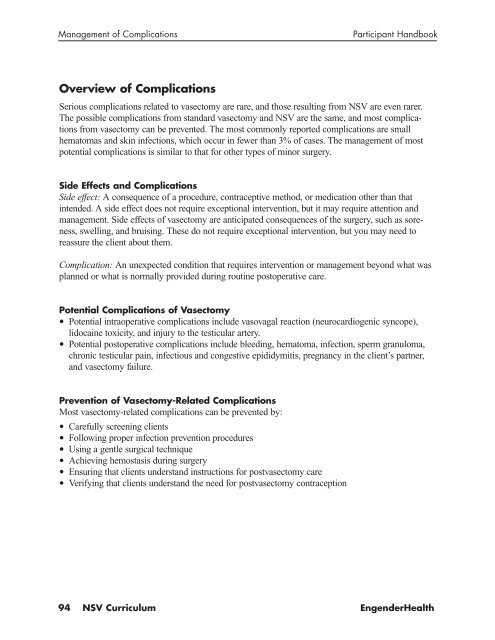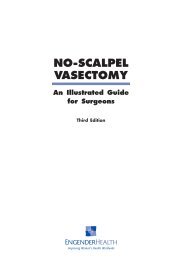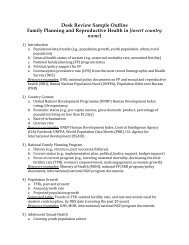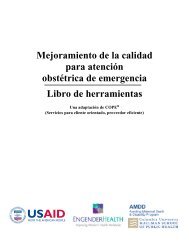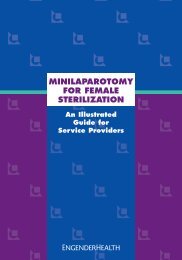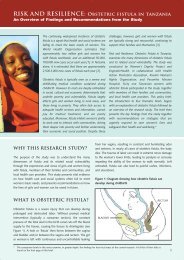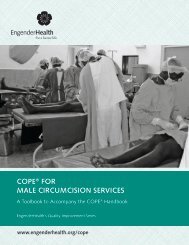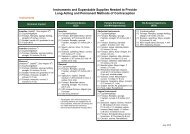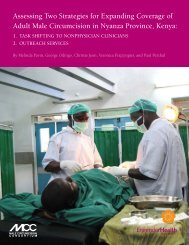NO-SCALPEL VASECTOMY - EngenderHealth
NO-SCALPEL VASECTOMY - EngenderHealth
NO-SCALPEL VASECTOMY - EngenderHealth
You also want an ePaper? Increase the reach of your titles
YUMPU automatically turns print PDFs into web optimized ePapers that Google loves.
Management of Complications Participant Handbook<br />
Overview of Complications<br />
Serious complications related to vasectomy are rare, and those resulting from NSV are even rarer.<br />
The possible complications from standard vasectomy and NSV are the same, and most complications<br />
from vasectomy can be prevented. The most commonly reported complications are small<br />
hematomas and skin infections, which occur in fewer than 3% of cases. The management of most<br />
potential complications is similar to that for other types of minor surgery.<br />
Side Effects and Complications<br />
Side effect: A consequence of a procedure, contraceptive method, or medication other than that<br />
intended. A side effect does not require exceptional intervention, but it may require attention and<br />
management. Side effects of vasectomy are anticipated consequences of the surgery, such as soreness,<br />
swelling, and bruising. These do not require exceptional intervention, but you may need to<br />
reassure the client about them.<br />
Complication: An unexpected condition that requires intervention or management beyond what was<br />
planned or what is normally provided during routine postoperative care.<br />
Potential Complications of Vasectomy<br />
• Potential intraoperative complications include vasovagal reaction (neurocardiogenic syncope),<br />
lidocaine toxicity, and injury to the testicular artery.<br />
• Potential postoperative complications include bleeding, hematoma, infection, sperm granuloma,<br />
chronic testicular pain, infectious and congestive epididymitis, pregnancy in the client’s partner,<br />
and vasectomy failure.<br />
Prevention of Vasectomy-Related Complications<br />
Most vasectomy-related complications can be prevented by:<br />
• Carefully screening clients<br />
• Following proper infection prevention procedures<br />
• Using a gentle surgical technique<br />
• Achieving hemostasis during surgery<br />
• Ensuring that clients understand instructions for postvasectomy care<br />
• Verifying that clients understand the need for postvasectomy contraception<br />
94 NSV Curriculum <strong>EngenderHealth</strong>


